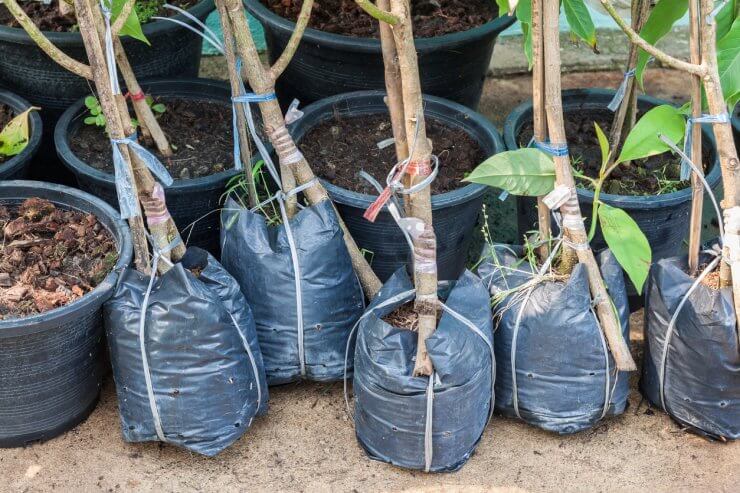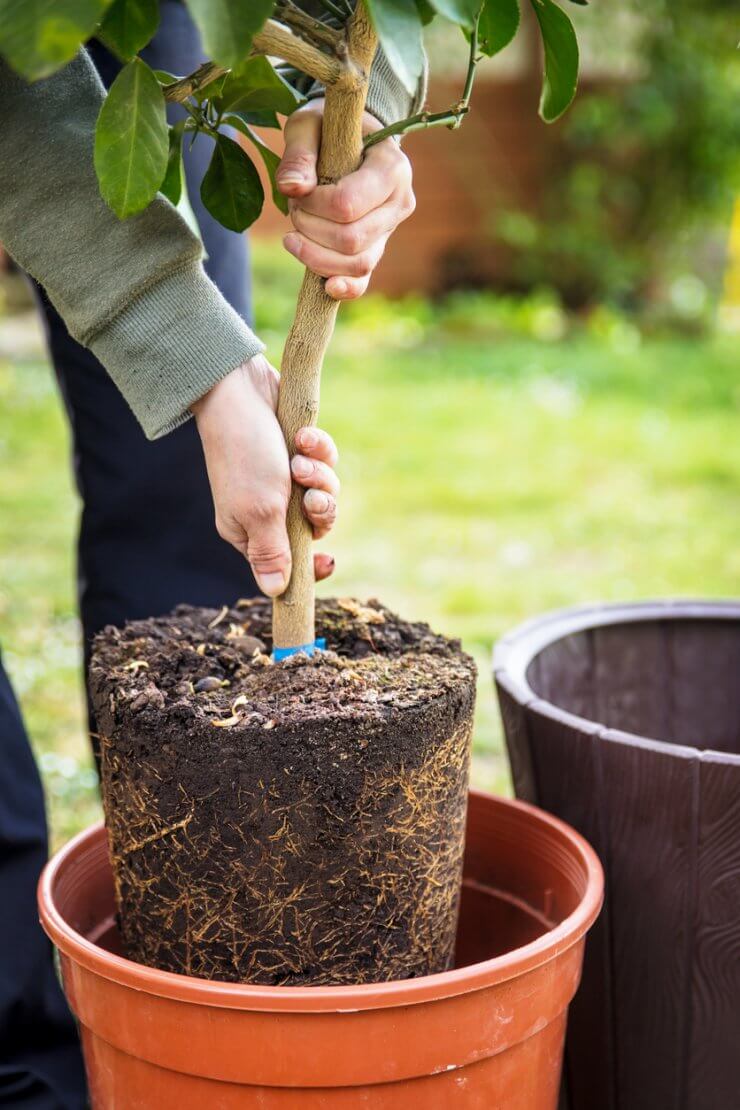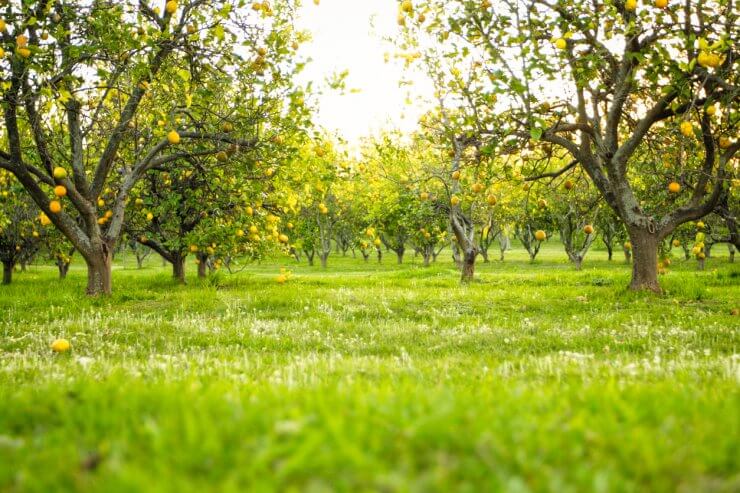
Mature lemon trees in open ground at a park
Lemons need lots of sunshine in order to thrive. They also need well-drained soil with a pH of 5.5 to 6.5. Lemons are more cold-sensitive than other citrus trees, so it’s a good idea to plant your tree on the south side of your home to give it maximum sun and to help protect it from temperature drops.
Plant your tree on the highest appropriate spot on your property. This will protect the trees from cold air that accumulates in low spots on your property and will also promote soil drainage and help prevent the pooling of water. Remember, lemons hate to have wet feet!
Acclimation

Lemon trees at a nursery
When you first get your tree from the nursery, let it acclimate a little before you plunk it in the ground. You can put it outside by your house where it will get mostly indirect sunlight, with just a couple hours of direct sunlight each day. After a week, you can move your acclimated tree to where you plan to plant it.
One way to check whether your tree agrees with your chosen planting location is to leave it in its nursery container after it’s acclimated, and put it in the spot you have in mind. Keep it well watered. In a week or two, you’ll know if that’s the right spot for your tree.
Before you plant your tree in the ground, check the drainage. Dig a hole about 30 inches deep where you plan to plant the tree (you can do this before you even order your tree, so you’re well prepared). Fill the hole with water to saturate the soil. Refill the hole with water the next day. If the water level drops 2 inches in 2 hours, your drainage is good. If it doesn’t, test another location or plan on building a raised bed for your tree.
While lemon trees are a great landscape addition to your yard, keep them away from the lawn. Grass likes frequent sips of water, either from your hose, a sprinkler, or an irrigation system. Lemon trees, on the other hand, like a good, deep drink of water about once a week.
Planting

Planting a lemon tree in a container
When you’re ready to plant your young tree, gently remove it from the container, keeping the soil intact. Check the root system; cut off any dead or broken roots before you plant the tree. Keep the roots out of the sun during this process.
Prepare a hole that’s just a little shallower than the root ball and about three times its diameter. If your soil is good but not great, consider filling in the hole with half the soil you dug out and the remaining half with amended garden soil. (Miracle-Gro and other companies sell soil especially for this purpose.)
Place your tree in the hole and begin filling in with your soil. Tamp the soil gently as you’re filling in, so you remove air pockets. Don’t add fertilizer to the soil as you’re backfilling; you can provide a little fertilizer to the soil surface after planting and before watering. Do your young tree a favor and stake it until it’s settled in.
Tree Spacing

Lemon trees, appropriately spaced
If you’re planting more than one lemon tree, plant them at least 12 feet apart, and give them at least 12 feet of clear space all around (away from fences, buildings, other plants) to allow for good air circulation. The same lemon trees that you can keep to a manageable size in containers will enjoy spreading out in open land.
One other advantage of planting more than one lemon tree of the same cultivar is pollination. While most lemon trees are self-fertile, having two trees will give you a more fruitful harvest from each one.
Companion Planting

Peas make an excellent companion plant for lemon trees
Lemon trees love nitrogen, so consider planting peas or alfalfa near your lemon trees. After you harvest your legumes, cut the plants back so they can release their nitrogen back into the soil.
You could also consider planting an herb garden that works well with the flavor of lemon. Basil, cilantro, rosemary, and thyme would be a good combination.
If you’d like to grow some pretty flowering plants that do double duty as pest deterrents, consider black-eyed Susan, borage, calendula, or yarrow. These flowers attract lacewings, ladybugs, and hoverflies, which love to snack on mealybugs, one pest that can infest your lemon tree.
Marigolds are another good choice for companion planting, since so many insect pests are averse to the marigold’s fragrance. Petunias have much the same effect. Nasturtiums are a toss-up: they’re aphid magnets. Of course, it’s better to have aphids on your nasturtiums than on your lemon trees, so you could put nasturtiums some distance away as a diversion.
How do you plant your lemons? What criteria for site selection has worked for you? Do you include companion plants with your lemon trees? Please share your ideas with us.


 Previous
Previous

